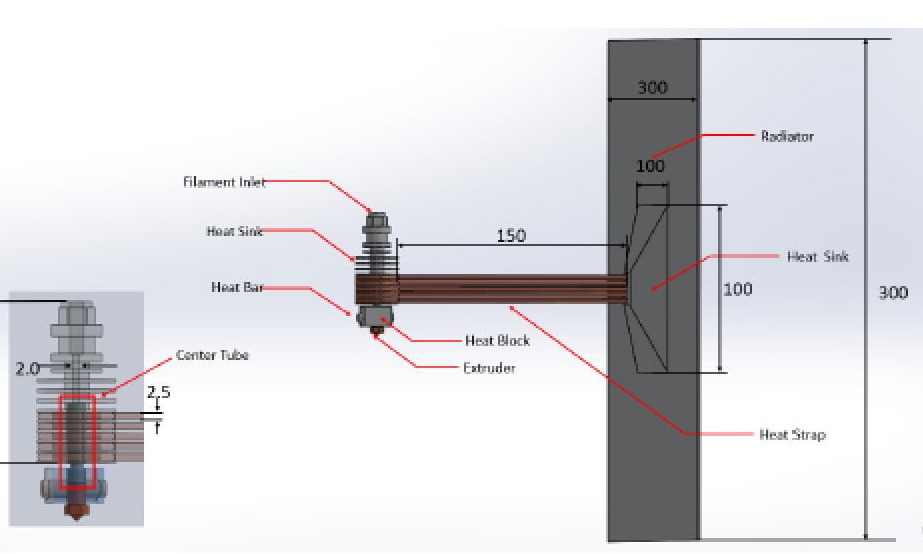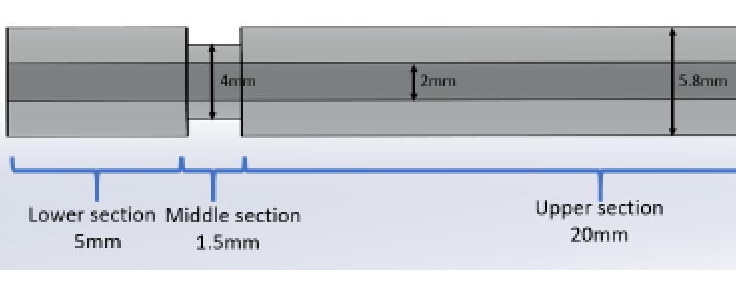Engineers at the University of Sydney and University of Science and Technology of China have designed a 3D printer capable of processing PEEK at high temperatures under simulated space conditions.
According to the team, using FDM 3D printing, it’s possible to produce PEEK satellite spares in-orbit, but the lack of heat transfer that occurs in space would cause current systems to overheat. To overcome this, the researchers have developed a novel 3D printer with Proportional Integral (PI) controllers capable of operating at up to 400°C in a vacuum, potentially making it ideal for future orbital repair missions.

A satellite servicing conundrum?
Over the last seventy years, the number of satellites in Earth’s orbit have soared, with more than 2,500 now said to straddle our planet’s atmosphere. As important as these are for communication and navigation on terra firma, they’re also vital for guiding space missions, thus their failure has the potential to throw such operations off-course, and create debris in which orbital vehicles can become damaged.
Theoretically, it’s possible to prevent satellite failures from happening, by servicing them via ‘on-orbit manufacturing.’ Viewing this approach as less costly than launching rockets packed with repair gear into orbit, the likes of Northrop Grumman and DARPA are now working on missions, in which their respective ‘Mission Extension Vehicles’ and ‘Mission Robotic Vehicles’ are set to conduct orbital trials.
However, the China and Australia-based researchers say the cost of on-orbit manufacturing is still expected to soar to $6.2 billion by 2030. To help aerospace firms reduce their expenditure in this area, the team has therefore highlighted the success of 3D printing experiments onboard the ISS, and suggested that the technology could be deployed in outer space, as well as on manned spacecraft.
In particular, the engineers believe that FDM machines could be ideal for carrying out orbital repairs, due to their lack of lasers, reliance on easily-storable filaments and compatibility with robust materials such as PEEK. Yet, despite their optimism around the technology, the team acknowledge that current systems would be vulnerable to material congestion in space, due to excessively-melted filament.

Printing in the vacuum of space
To make orbital 3D printing more viable, the researchers set about developing a 3D printing system with an upgraded thermal control unit that can land on satellites, before using robotic arms to replace damaged parts. Aside from these arms and its landing gear, the team’s first prototype was largely based on a standard FDM architecture, complete with heat bar, block, sink, strap, extruder and radiator.
As a means of assessing their machine’s potential before building it, the team opted to carry out a number of PEEK-printing simulations. Interestingly, results showed that increasing the quantity of heat straps between the device’s heat sink and radiator allowed it to control the temperature of its central tube more effectively, while preventing melted filament backflow during material feeding.
Through their simulations, the engineers also discovered that printing in reduced gravity can cause material to attach itself to a system’s inner tube, increasing friction and potentially creating extrusion blockages. To get around this, the team iteratively modified this section, before coming up with a design that served to improve its heat conduction efficiency, and functioned at a heat of up to 400°C.
Finally, once they’d collated all their data, the researchers devised a mathematical model, which demonstrated the benefits that the introduction of a ‘fuzzy PI control module’ would bring to their system. Essentially acting as a failsafe, the device is designed to kick in at temperatures of 380°C, enhancing the precision of its thermal control features, but also preventing overheating and risking repair errors.
Having wrapped up their evaluations, the engineers are now building a working prototype, which they intend to test in a physical vacuum chamber. In future, if their printer were to find end-use applications, the team believe it could help “reduce the cost and time of space exploration” by conducting repairs “without the need for additional launches.”

AM’s ambitious orbital applications
3D printing in space may sound like something from the realms of science fiction, but the technology has been tested off-planet before, onboard NASA’s International Space Station (ISS). One of the leaders in this area is Made In Space, now a subsidiary of Redwire, which installed a new ceramic 3D printing module onboard the orbital base last year.
The company’s technology is also set to be fitted on Blue Origin and Sierra Space’s upcoming commercial ‘Orbital Reef’ space station. Slated for launch by 2026, the new base is expected to serve as a ‘mixed-use business park,’ while playing host to Made In Space’s continued microgravity R&D and experimental production tests.
At the Munich University of Applied Sciences, meanwhile, researchers have taken a similar approach to the Australian-Chinese team, and developed an orbital satellite 3D printer. Built to reduce the amount of mission-length-limiting fuel needed to fire repair equipment into space, the system could in future, be capable of constructing entire solar panel or antenna-related parts in zero gravity conditions.
The researchers’ findings are detailed in their paper titled “Extrusion and Thermal Control Design of an On-orbit 3D Printing Platform,” which was co-authored by Jianning Tang, Trevor Hocksun Kwan and Xiaofeng Wu.
To stay up to date with the latest 3D printing news, don’t forget to subscribe to the 3D Printing Industry newsletter or follow us on Twitter or liking our page on Facebook.
For a deeper dive into additive manufacturing, you can now subscribe to our Youtube channel, featuring discussion, debriefs, and shots of 3D printing in-action.
Are you looking for a job in the additive manufacturing industry? Visit 3D Printing Jobs for a selection of roles in the industry.
Featured image shows a rendering of a satellite in lower earth orbit (LEO). Image via Made In Space.



